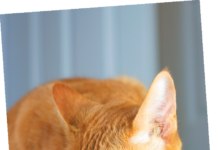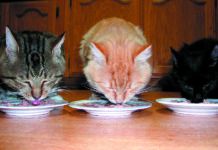Why Cats Could Never Survive on Dog Food
If your cat occasionally gets into your dog’s food, it’s no big deal. But cats have unique nutrition requirements that dog food simply cannot cover. In fact, it would be much easier for a dog to get by on cat food than vice-versa. Consider these differences:
Dry Food or Wet? Which Is Right for Your Cat?
Perhaps you feed your cat dry food but have been nagged by the possibility that wet would be better for him. Sure, dry food is much less expensive and comes with a lot less muss and fuss. There are fewer trips to the store to replenish meals and less hassle because it’s just one big bag instead of a bunch of cans, pouches, or plastic trays. Not only are those a pain to lug home, but you also have to rinse them out and separate them into metals and plastics so they end up in recycling rather than landfills. Plus, wet food that is not eaten immediately can grow bacteria and become unappetizing.
Why Cats Are Incorrectly Perceived as Picky Eaters
A 10-pound cat may need only about 250 calories a day—very little from a human standpoint. Thus, it may seem as though she’s not eating enough, even though she is. That can lead someone to keep trying different kinds of food until the cat consumes what’s put in front of her, creating the notion that felines are finicky eaters.
In Your Cat’s Future: A Change in Diet
When we think of dietary changes to treat an illness, we tend to think of them as a kind of Band-Aid approach. The attitude among many people is that eating differently may help at the margins but is nothing compared to the power of pharmaceuticals or surgical procedures. Not true, either for us or our cats. In a number of cases, a change in diet can extend life for years, and also the quality of life.
What’s the Right Number of Meals to Feed Your Cat Each Day?
Many people feed their cat twice a day—once in the morning and once in the evening—and cats in general seem to do fine on that schedule. Some people feed their cats just once a day, and even those pets appear to do okay, although they might like their food divided between two feedings in order not to get too hungry overnight. But if a cat had his druthers, he’d probably prefer several small meals a day—three, four, or even five. Why?
Tuna Concerns
Q: In a recent issue you talked about why cats love tuna but left out the most important thing, which is that tuna generally has high concentrations of mercury and that mercury is poison. Why would anyone who loves their cat knowingly feed them poison? You should print a follow-up article that makes people aware of the danger in feeding tuna to their pets.













